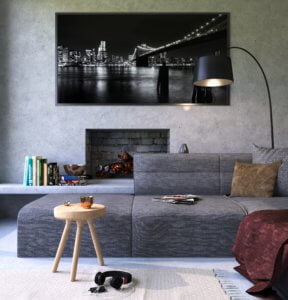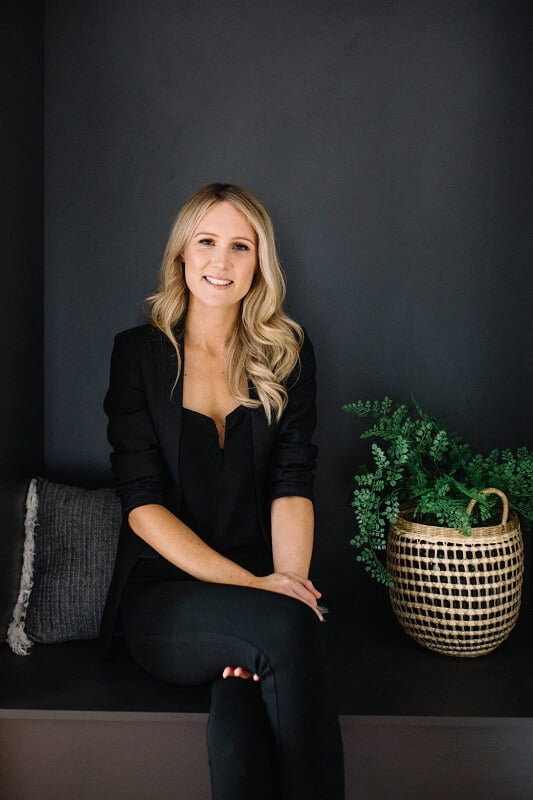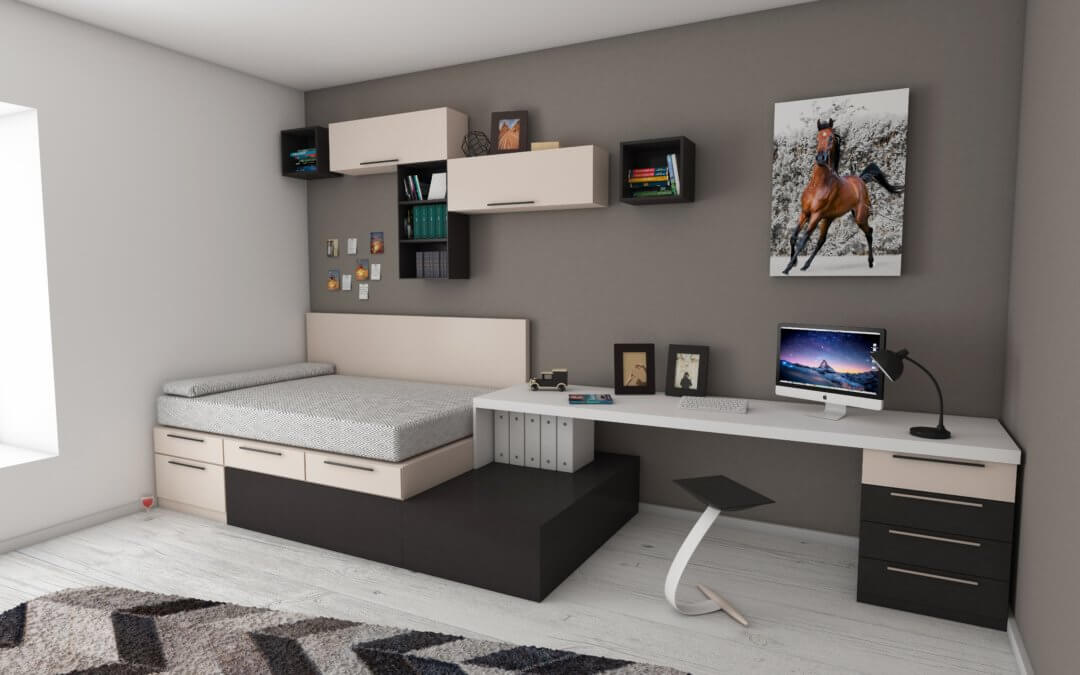Let’s cut to the chase. Virtual home staging is not the real deal. By definition it is not even real. Yet, it does have its place.
Australians may be excused for not knowing what virtual staging is. It’s not that common here. So, before we go any further let’s start by explaining what virtual staging is.
What Is Virtual Staging?
Virtual staging is the graphic editing of images of an empty home to add digital furniture and accessories. A graphic editor has a library of 3D rendered objects to select and insert into the original photos. It provides listing photos that allow buyers to see the home as furnished.
The Advantages
The number one advantage of virtual staging is cost. It costs a fraction of “real” home staging. It takes little time and is cheaply outsourced to graphic editors outside Australia.
As the furniture is digital, an unlimited selection of styles, sizes and colours is available. On the other hand, the selection available to a property stylist can be limited. A good property stylist always has inventory and access to the right style, size and colour furniture for every style of home.
Another advantage is time. The turnaround to edit images can be within a few hours. However, images are required to begin with. You either have to take photos yourself or organise a photographer. This leads us into the cons.
The Downside
A graphic editor, particularly one working on residential real estate, is not an interior designer. Further still, if the graphic editor is working outside of Australia (very likely with cheap online offerings), they will not know the market. So, they don’t know who they are appealing too. Styling that sells homes in Brisbane, is very different to other cities.
Virtual staging never looks real. It looks close to real, but falls short. Lighting, shadows, angles, proportions, even the creases in cushions, they never look right. 
I’ve been to a few properties now where the owner has had virtual home staging initially. Looking at the photos I estimated the furniture required to stage it. But, once I arrived for an on-site consultation what I saw was completely different. The photos had been misleading. Not deliberately to make it look larger, just generally out of proportion. Potential buyers do not appreciate this experience.
On that note, the biggest downside to the virtual staging is that it is not real. When buyers arrive, they see an empty home. They are set up for disappointment.
Photos. Unless you are a professional with all the kit, your photos will not do your home justice. Even an empty home should be shot by a professional. So, if you’re investing in a professional photographer, why not invest in real home staging?
Despite the cons, virtual staging has its place.
When to Use Virtual Staging
For one, you must have an empty home. If not, then this is not for you. On a similar note, the most common use of virtual staging is for homes that don’t even yet exist. Property developers use virtual staging for their virtual homes. They achieve amazing results, but bear in mind they pay top dollar for graphic designers. Until development is complete, they have no other option. Once the development is complete, developers will invest in real photos of display home styling. Here’s an example of a recent display home we styled.
If you have a restricted budget, then virtual home staging could be your only option. Ten to twelve images will cost you around $500. Whereas, the cost of property styling starts at $2000.
If your property is of lower value, say under $200,000, then an investment in property styling would not make an adequate return. Virtual home staging would be worth considering.
Lastly, if your property is in a remote location then virtual home staging is a good solution. Property styling services will not be accessible, or come with an nonviable delivery cost. Also, being in a remote location, only truly interested buyers are going to travel to view it.
When Not to Use Virtual Staging
For all the opposite reasons above. If your property is worth more than $200,000 and in a city/urban location, then real home staging is your best option.
This last point may be an obvious one. If your home is a “demolition job” don’t waste your money on either virtual or real home staging.
The Wrap
As a property stylist, I’m always going to biased against virtual home staging. However, I still believe it has a place in remote and low value regions. I would not recommend virtual home staging for the areas we service. Homes in the Brisbane, Gold Coast and Sunshine Coast region are valuable. The deserve the investment of property styling.

Emma Tobin, Director and Lead Stylist at The Urbane Property Stylist, holds a B.D. (Interior Design). With over ten years of experience in Interior Design, Landscape Architecture and Property Styling, Emma has earned a reputation for her attention to detail and ability to deliver.
